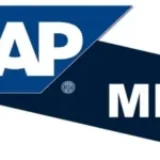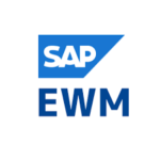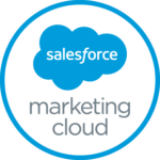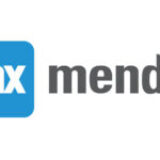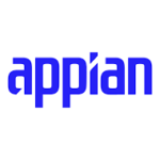AWS Devops Training
Master AWS Devops Online Training at Golive classes and unlock your potential in the world of Devops. Enroll now!
About Course
Do you want to learn AWS Devops Tools ? Train with Leading SAP MM training provider, Golive Classes. We provide the best AWS Devops training in Hyderabad and all over India.
Learn AWS Devops training with Golive Classes. We at Golive Classes provide the world class training in AWS Devops training
What is The objective of learning AWS Devops Training
In the ever-evolving landscape of software development, agility and efficiency are paramount. The convergence of Development and Operations, popularly known as DevOps, has emerged as a transformative approach to streamline workflows, enhance collaboration, and accelerate software delivery. At the heart of this paradigm shift lies Amazon Web Services (AWS), a leading cloud computing platform offering a comprehensive suite of tools and services tailored for DevOps practices.
The objective of AWS DevOps training is multifaceted, aiming to equip professionals with the knowledge and skills required to harness the full potential of AWS services within the DevOps framework. Here’s a glimpse into the key objectives:

Aws Devops Training
What You will learn in AWS Devops Training
- Proficiency in AWS Tools: The training delves into the diverse array of AWS services pertinent to DevOps, including AWS CodePipeline, AWS CodeDeploy, AWS CodeCommit, AWS CloudFormation, and more. Participants learn how to leverage these tools to automate infrastructure provisioning, deploy applications seamlessly, and orchestrate complex workflows efficiently.
- Continuous Integration and Deployment (CI/CD): By mastering CI/CD pipelines on AWS, trainees can automate the software delivery process, from code commit to production deployment. This enables rapid iteration, early bug detection, and ensures the reliability and scalability of applications.
- Infrastructure as Code (IaC): Understanding IaC principles using tools like AWS CloudFormation empowers DevOps engineers to manage infrastructure programmatically, promoting consistency, repeatability, and scalability across environments.
- Monitoring and Optimization: Effective monitoring and optimization are vital for maintaining the health and performance of cloud-based applications. Through AWS DevOps training, professionals learn to implement robust monitoring solutions using AWS CloudWatch, along with techniques for optimizing resource utilization and cost management.
- Collaboration and Best Practices: Beyond technical skills, the training emphasizes collaboration, communication, and best practices essential for fostering a culture of DevOps excellence within organizations. Participants gain insights into Agile methodologies, DevOps culture, and effective teamwork, ensuring alignment between development and operations teams.

Aws Devops Training
Why choose Golive Classes?
Golive classes we provide:
- Real-time concepts with case studies
- Project Explanation
- Interview Questions
- Resume preparation
- Technical Assistance even after Course Completion
- Career Guidance
- Life time access to video recordings.
- The assistance provides in consulting and placement
- Free other courses will be provided free of cost.
Who can learn AWS Devops Course
AWS DevOps courses are designed to cater to a diverse audience, ranging from seasoned IT professionals to aspiring developers looking to enhance their skill set. Here’s a breakdown of who can benefit from learning AWS DevOps:
- Software Developers: Developers aiming to streamline their development workflows, automate deployment processes, and enhance collaboration with operations teams can greatly benefit from AWS DevOps training. Learning AWS tools and practices empowers developers to deploy and manage applications efficiently in the cloud environment.
- System Administrators: System administrators seeking to transition to cloud-based infrastructure management can leverage AWS DevOps training to acquire the necessary skills. By learning automation techniques, infrastructure as code (IaC), and cloud-native monitoring tools, administrators can enhance their proficiency in managing and scaling cloud resources effectively.
- Operations Engineers: Operations engineers responsible for maintaining application reliability, performance, and scalability can augment their skill set with AWS DevOps training. Mastering CI/CD pipelines, configuration management, and monitoring solutions on AWS enables operations teams to streamline processes, minimize downtime, and enhance the overall quality of service.
- DevOps Engineers: Professionals specializing in DevOps practices can further enhance their expertise by focusing on AWS-specific tools and services. AWS DevOps training provides insights into optimizing DevOps workflows, implementing best practices, and leveraging AWS services to drive continuous integration, delivery, and deployment.
- IT Managers and Leaders: IT managers and leaders looking to foster a culture of DevOps excellence within their organizations can benefit from understanding AWS DevOps principles and practices. By gaining insights into cloud-native DevOps workflows, leaders can facilitate organizational transformation, improve collaboration between teams, and drive innovation in software delivery processes.
- Students and Graduates: Aspiring professionals or students aiming to kickstart their careers in the field of cloud computing and DevOps can find AWS DevOps training invaluable. Acquiring AWS DevOps skills not only enhances employability but also opens doors to exciting career opportunities in the rapidly evolving tech industry.
What are the Prerequisities to learn AWS Devops Course
To embark on an AWS DevOps course successfully, having a foundation in certain areas can greatly enhance your learning experience and comprehension. Here are some common prerequisites:
- Basic Knowledge of Cloud Computing: Understanding fundamental concepts of cloud computing, such as Infrastructure as a Service (IaaS), Platform as a Service (PaaS), and Software as a Service (SaaS), lays a strong foundation for learning AWS DevOps. Familiarity with cloud providers and their offerings is beneficial.
- Understanding of DevOps Principles: Having a grasp of DevOps principles, including continuous integration (CI), continuous delivery (CD), automation, and collaboration, provides context for integrating AWS services into DevOps workflows. Knowledge of Agile methodologies and DevOps culture is also advantageous.
- Proficiency in Linux and Command Line Interface (CLI): Since AWS predominantly uses Linux-based systems, familiarity with Linux operating systems and basic command line navigation is essential. Understanding shell scripting can further facilitate automation tasks.
- Programming Skills: While not always mandatory, having proficiency in at least one programming language such as Python, Java, or JavaScript can be beneficial. Many DevOps tasks involve writing scripts for automation, infrastructure provisioning, and application deployment.
- Networking Fundamentals: A basic understanding of networking concepts, such as IP addressing, subnets, routing, and TCP/IP protocols, is helpful for configuring and managing AWS networking services like Amazon VPC (Virtual Private Cloud) effectively.
- Version Control Systems (e.g., Git): Familiarity with version control systems like Git is advantageous, as it’s commonly used for managing source code repositories, collaboration, and version tracking, which are integral to DevOps practices.
- Basic Knowledge of Databases: Understanding database concepts such as relational databases, NoSQL databases, and database management systems (DBMS) can be beneficial, especially when working with AWS database services like Amazon RDS (Relational Database Service) and Amazon DynamoDB.
- Experience with CI/CD Tools: While not mandatory, prior exposure to continuous integration and continuous delivery tools like Jenkins, Travis CI, or GitLab CI/CD can provide a head start in understanding CI/CD pipelines and their integration with AWS services
What are the Job opportunities in AWS Devops Course
AWS DevOps offers a wide array of job opportunities for both freshers and experienced professionals due to its increasing demand in the tech industry. Here’s a breakdown of job opportunities in AWS DevOps:
- Junior DevOps Engineer/Associate: Freshers with a background in computer science, IT, or related fields can start their careers as Junior DevOps Engineers or Associates. These roles typically involve assisting with the implementation of DevOps practices, supporting CI/CD pipelines, and learning to manage cloud infrastructure using AWS services under the guidance of senior team members.
- DevOps Engineer: Experienced professionals with a few years of experience in software development, system administration, or related roles can transition into DevOps Engineer positions. These roles involve designing, implementing, and maintaining CI/CD pipelines, managing infrastructure as code (IaC), automating deployment processes, and optimizing cloud resources using AWS services.
- Cloud Engineer: Cloud Engineers proficient in AWS DevOps practices play a crucial role in designing, deploying, and managing cloud infrastructure on AWS. They are responsible for architecting scalable, reliable, and secure cloud solutions, implementing best practices for cloud-native development, and optimizing resource utilization for cost efficiency.
- Site Reliability Engineer (SRE): SREs focus on ensuring the reliability, availability, and performance of cloud-based applications and services. They leverage AWS DevOps practices to implement monitoring solutions, automate incident response, and improve system resilience, contributing to the overall reliability of infrastructure hosted on AWS.
- DevOps Consultant: Experienced DevOps professionals often work as consultants, providing guidance and support to organizations seeking to adopt DevOps practices on AWS. DevOps Consultants help design DevOps strategies, assess existing infrastructure, implement automation solutions, and train teams on AWS DevOps best practices.
- DevOps Manager/Lead: Experienced professionals with strong leadership and managerial skills can advance into DevOps Manager or Lead roles. These roles involve overseeing DevOps teams, driving strategy, managing projects, and ensuring alignment between development and operations functions to optimize software delivery processes on AWS.
- AWS Solutions Architect (DevOps): AWS Solutions Architects specializing in DevOps focus on designing and implementing cloud solutions that align with DevOps principles. They work closely with development and operations teams to architect scalable, secure, and highly available applications on AWS, leveraging DevOps practices and AWS services effectively
AWS Devops Training Courses Curriculum
LIST OF TOOLS
- Amazon Web Services
- Linux
- Shell Scripting
- Ansible
- Terraform
- Jenkins
- Docker
- Kubernetes
- Helm Charts
- Git & GitHub & GitHub Actions
- Sonarqube
- Nexus
- Prometheus
- Grafana
- Elasticsearch, Logstash, Kibana (ELK)
- NewRelic
- GoCD
- ArgoCD
- ISTIO Service Mesh
- Python
List of Topics:
Amazon Web Services:
- AWS Account
- AWS Regions & Availability Zones
- Public IP & Private IP
- Security Groups
- SG Inbound & Outbound Rules
- EC2 Instances
- Creation of EC2 Server
- Connect to Linux EC2 Server from Windows / Mac/ Linux
- EC2 Spot Instances
- EC2 Spot Persistent Instances
- AWSRoute53
- AWS Parameter Store
- AWS Secrets Manager
- 53 Buckets
- Create 53 Bucket
- Encrypting S3 Buckets
- Versioning data in S3
- IAM Introduction
- User creation with Security Credentials
- Use managed policies
- Create our own IAM
- IAM Roles
- IAM OIDC Roles
- VPC
- Private and Public Subnets
- Route tables for public and private
- Internet Gateway and Implementation
- NAT Gateway and Implementation
- Web Subnets, App Subnets and DB Subnets
- Subnet security using NACL
- VPC Peering
- AWS Landing Zone
- DocumentDB Overview
- Create DocDB Cluster
- Subnet Group for DocDB
- Parameter Group for DocDB
- DocumentDB in private connectivity
- Elasticache Overview
- Create Elasticache Cluster
- Subnet Group for Elasticache
- Parameter Group for Elasticache
- Elasticache in private connectivity
- RDS Overview
- Create MySQL RDS Cluster
- Subnet Group for RDS MySQL
- Parameter Group for RDS
- RDS in private connectivity
- Backup Policies
- RabbitMQ Overview in MQ Service
- Create RabbitMQ Cluster
- Subnet Group for RabbitMQ
- Parameter Group for
- RabbitMQ in private
- Application Load
- Public Application Load
- Private Application Load
- Single private application load balancer for multiple backend
- Expose private apps running on private servers over Load
- Autoscaling
- Autoscaling with load balancer target
- Launch Templates for
- Encryption with AWS
- AWS WAF
- AWS Sheild
- AWS ACM
Linux
- Anatomy of Linux
- Linux Command line introduction
- List files – Is command
- Create file – touch command
- Remove file – rm command
- Copy file – cp command
- Move file – my command
- Directory Structure in Linux
- Change Directory – cd command
- Current Working Directory – pwd command
- Create Directory – mkdir command
- Delete Directory – rm -r command
- Copy Directory – cp -r command
- Move files & directories – my command
- Rename Directories – my command
- Editor – vim command
- Word search – grep command
- Colum Filter – awk command
- Line filters – head & tail commands
- Find files – find command
- Download content – curl command
- Extract compressed files – tar and unzip command
- Pipes in the command line
- Process Management – ps command
- Process Management – kill command
- User management – useradd command
- Privileged escalation – sudo command & sudoers configuration
- Package Management – dnf command
- Service Management – systemctl command
- File ownership – chown command
- Group Ownership – chgrp command
- File permissions – chmod command
- Network info commands
Shell Scripting
- What are the problems we are having?
- What shell scripting is actually
- Introduction to shell
- What are the cases we use shell
- What are the cases that we dont use shell scripting
- What are the different types of shell scripting we
- Why bash shell is so
- Why are we learning Bash
- How to write a shell script in an
- How do we get that shell script into a Linux
- How do we execute a shell
- How to print messages using shell script
- How to print coloured line
- Introduction to
- Declaring variables
- Accessing variables
- Command substitution variables
- Arithmetic substitution variables
- Read write variable property
- Local variable property
- Scalar variable property
- Special variables in shell
- How do we take input using special variables in shell script
- Single quotes and double quotes and when to use which codes
- Exit status inside scripts
- What is the function
- How to declare a function
- How do you access a function
- Variable scope inside a function
- Special variables of a function
- Return status of a function
- If condition in shell scripting
- Different forms of if condition
- Expressions inside if condition
- String expressions
- Number expressions
- File expressions
- Case condition in shell scripting
- Loops in shell scripting
- While loop in shell scripting
- For loop in shell scripting
- Input redirectors in shell scripting
- SED editor in shell scripting
- Sourcing files in shell scripting
GIT
- Introduction to code
- Introduction to git
- Introduction to
- How to create a GitHub
- How to make your profile in
- How GitHub profile can help us in marketing our profile for
- How to create a GitHub
- How to clone the repositories into local
- How do we modify the code in local
- How do we push the code to the remote repositories
- Introduction to code
- Importance of using code
- How code editors can help in enhancing our
- The best ways of creating the
- What are the scenarios that we go with the
- Importance of message in git
- How do we write messages in the organizations while we
- How do we pull the code from git
- How do we get the changes developed in local system to remote
- What are git
- When to use git tags
- How to merge a branch to
- What are pull
- What are peer reviews
- How to get git commit history.
- Application release strategy using Git
- Starting to GitOps
- Implementing
- Importance of TBD(Trunk Based Development)
- Short living branches vs Long Living Branches
Ansible
Problems of shell scripting
- Introduction to configuration management
- History of configuration management
- How Ansible is different from Chef and
- Push and Pull mechanism
- Advantages and Disadvantages of ansible push and pull mechanism
- Installation of Ansible
- Ansible and its version’s history
- Difference between a Module and a Collection
- Ansible Inventory
- Best Practices of Inventory Management
- Run ansible ADHOC commands
- Send SSH credentials to
- Problems of Ansible ADHOC commands
- introducing declarative markup languages
- )(NIL vs JSON vs YAW,
- Introduction to Ansible
- Plays inside the
- Multi Play
- Tasks inside a
- DEBUG module to print messages
- Play level
- Task level
- Variables from the Inventory file
- Variables from the command
- Introduction to Ansible
- Role directory
- Best practices of Ansible
- Role Level Variables
- Variable Precedence in
- Importance of files directory in ansible
- importance of meta directory in ansible
- Importance of templates directory in ansible
- What is Ansible Galaxy.
- Roles from Ansible
- Conditions in
- Loops in
- Make a unified playbook that works for both Ansible pull and push mechanism.
- What is Ansible
- Ansible GUI Open Source Tools
Jenkins
- Introduction to Jenkins
- Practical use cases of Jenkins
- Install Jenkins
- How to create a freestyle job in Jenkins
- Jenkins architecture
- Disadvantages of Jenkins Standalone system
- Practices that can make Jenkins highly available
- Jenkins server, Agent architecture, Why is it
- Add a node agent to a Jenkins
- Best practices of labelling nodes
- How to run the jobs in a particular node using
- How to create Jenkins jobs automatically.
- Jenkins pipeline jobs
- Difference between scripted pipeline and declarative pipeline
- Agent section in Jenkins declarative pipeline
- Post section in Jenkins declarative pipeline
- Stages and steps in Jenkins declarative pipeline
- Configure environment variables in Jenkins declarative pipeline
- Configure parameters in Jenkins declarative pipeline
- Pipeline triggering automatically with the trigger section in the Jenkins pipeline
- When conditions in Jenkins declarative pipeline
- Introduction to Jenkins shared
- Introduction to groovy
- Groovy scripting variables conditions loop and
- Configure shared library
- Configure shared library inside Jenkins_
- Global shared library versus Pipeline shared
- Code DRY with shared library
- Limitations of Jenkins declarative pipeline
- Introduction to Jenkins scripted pipeline
- Advantages of using Jenkins scripted
- Plugin management in Jenkins
Terraform
- Introduction to
- advantages of
- Introduction to terraform
- Terraform Alternatives
- Advantages of Terraform
- Introduction to HCL, Hashicorp configuration language
- Code structure of terraform, Terraform file extenstions
- Installing Terraform
- Terraform life cycle
- Terraform init phase
- Terraform plan phase
- Terraform apply phase
- Terraform destroy phase
- HCL code
- Output block
- Terraform inbuilt functions
- Variable block
- Terraform tfvars
- Terraform auto tfvars
- Variable precedence in terraform
- Resource block in Terraform
- attributes and arguments in terraform resources
- Provider block in Terraform
- Data sources in Terraform
- Resource reference in Terraform
- Loops in terraform
- Loop with count argument
- Loop with for each argument
- Best ways of providing inputs to terraform
- Terraform state file
- Best ways to manage in terraform state file
- Conditions in Terraform resources
- Modules in Terraform
- Local modules In Terraform
- Modules from the vendor in Terraform
- Best practices for writing terraform modules
- Locals in terraform
- Versioning terraform code
- Terraform multi-environment coding structure
- Best practices of terraform coding structure for real-time
- Terraform test
Docker
- Hardware evolution over the
- Physical Server Vs Virtual Server Vs Container
- Introduction to
- Advantages of
- Container adoption with respect to application
- Advantages of packaging the software in the
- Different types of container management software
- Introduction to Docker
- How Docker demystified container ecosystem
- Docker architecture
- Rise and Fall of Docker Usage
- nifferent types c,f container runtimes
- Public Docker images
- Introduction to Dockerfile
- Different instructions in Dockerfile
- Build a Docker image
- List Docker Images
- Compare Docker image with AMI in Amazon
- Docker imaging layers
- FROM instruction Dockerfile
- RUN instruction Dockerfile
- COPY instruction in Dockerfile
- ADD instruction in Dockerfile
- CMD instruction in Dockerfile
- ENTRYPOINT instruction in Dockerfile
- Difference between ADD and COPY
- Difference between CMD and ENTRYPOINT
- Docker registry
- Public Docker registry
- Private Docker registry
- How to push Docker images to the registry
- How to run a container
- Run a container by opening a dynamic port
- Running container with opening a static port
- Run a container mapping volume
- Run 2 containers mapping the same volume
- Run a container using a health check
- List running containers
- List all containers
- Inspect the information of a container
- Introduction to ECR
- Push Images to ECR
- Build Docker Images with Pipelines
Kubernetes
- Introduction to Kubernetes orchestration
- Importance of having an orchestrator tool
- How Kubernetes is different from
- Advantages of Kubernetes pod
- Kubernetes architecture overview
- How to interact with Kubernetes
- Kubernetes kubeconfig
- Set up Minikube for learning
o■ Introduction to Kubernetes YAML
- Introduction to a
- Create a pod with a single container
- Create a pod with multi-container
- Labels in Pods
- Fetch the pods using labels
- Annotations in Kubernetes
- How to add environment variables to a pod
- Introduction to config map
- Read the environment variable from the config map
- Read the complete config map into the pod
- Introduction to Secrets in Kubernetes
- Load secrets into the environment of a pod
- How to scale a Pod
- Introduction to the replica set
- Create a replica set with multiple replicas of pods
- disadvantages of the replica set
- introduction to deployment
- Create a deployment with multiple replicas of pods
- How deployment is different with a replica set
- How deployment uses replica set
- Advantages of deployment over replica set
- Introduction to services
- Types of services
- ClusteriP in service
- Load Balancer in service
- NodePort in service
- Introduction to AWS EKS
- Configure EKS with Terraform
- OIDC in EKS
- EKS Node Groups
- Getting kubeconfig for EKS
- Introduction to Namespaces
- Disadvantages of secrets and config maps in production
- How to use Amazon parameter store with Kubernetes
- Introduction to Service Accounts
- AWS IAM to EKS Service Account access
- Create IAM roles for AWS Parameter
- Expose a service with a Load Balancer to the outside world from the EKS cluster
- Importance of Ingress Controller Setup Nginx Ingress Controller
- Expose a Service with Nginx Ingress Controller
Setup Prometheus & Grafana in EKS
- Read the metrics over
Sonarqube
- Introduction to Continous Integration Process
- Importance of Code Quality Tools in CI Process
- Introcution to SonarQube
- Install SonarQube Open Source Version
- Setup Sonar Client in Jenkins nodes
- Submit sonar scans for development projects over CI Pipeline
- Review results in SonarQube
- Understand Bugs & Vulnerabilities
- Understand Code Smells
- Understand Coverage
- Understand Code Duplications
- Understand Code Debt
- Understand Qualitygate
- Create Qualitygate
- Understand Quality Profiles
- Ensure CI pipelines fail on the Qualitygate
I FORG Artifactory
Introduction to Binary Repository
How binary repository is different from a Code Repository
- Introduction to ifrog artifactory
- Install jfrog artifactory Open source editon
- Explore hosted repos VS group repos VS proxy repos
- Create Hosted repos
- Upload artifacts from the CI pipeline to Artifactory
Python Scripting
Introduction to Python scripting.
- Python history and versions
- Differences from V2 to V3
- Python use cases
- Indentation in Python
- Variables in Python
- Declare variables with data types
- Conditions
- Exception handling
- Loops
- Regular expressions
- Modules
- OS Module
- Platform module
- Subprocess module
- Sys module
- Psutil module
- Requests module
- Logging module
- Paramiko module
- Boto3 module
- Run lambda with Python code
GoCD
- Introduction to Deployment Tool
- Need of a Deployment tool a
Install GoCD Server
- Configure GoCD Agents
- Add GoCD Pipelines
- Materials in GoCD
- Config Repos in GoCD
- Groups in GoCD
- Pipeline as Code in GoCD
- Creating Pipelines for
- Pipeline code for Project Requirements
ArgoCD
- Introduction to ArgoCD Tool
- ArgoCD architecture
- Install ArgoCD in EKS Cluster
- Configuring
- Create Projects
- Create YAML code for Projects
- Sync Policies
- Best practices
ISTIO Service Mesh
- Introduction to Service Mesh
- ISTIO Service Mesh
- Famous service mesh
- Injecting ISTIO Sidecar
- Envoy Proxy
- Configure ISTIO for
- Additional possibilities with ISTIO
GitHub Actions
- Overview of GitHub Actions
- Basic concepts of GitHub Actions
- Understanding Workflows, Events, Jobs, Steps, Runners, and Actions
- Setting up a GitHub Repository for GitHub Actions
- Writing your first workflow file
- Understanding YAML syntax
- Triggering workflows with GitHub events (push, pull_request, )
- Using environment variables and secrets
- Configuring jobs in a workflow
- Running multiple jobs: dependencies and parallel execution
- Using steps within a job
- Utilizing actions in steps (official and community actions)
- Managing workflow dependencies and artifacts
- Working with conditional executions in workflows
- Deploying applications to cloud platforms (AWS, Kubernetes)
- Integrating with external services and APIs
- Notifications and communications
- Managing secrets and tokens securely
- Best practices for efficient workflows
AWS Devops training course content download Link:
Want to book a Demo for this AWS Devops Online training? Click Register.
Course Content
Amazon Web Services:
-
AWS Account
-
AWS Regions & Availability Zones
-
Public IP & Private IP
-
Security Groups
-
SG Inbound & Outbound Rules
-
EC2 Instances
00:00 -
Creation of EC2 Server
-
Connect to Linux EC2 Server from Windows / Mac/ Linux
-
EC2 Spot Instances
-
EC2 Spot Persistent Instances
-
AWSRoute53
-
AWS Parameter Store
-
AWS Secrets Manager
-
S3 Buckets
-
Create 53 Bucket
-
Encrypting S3 Buckets
-
Versioning data in S3
-
IAM Introduction
-
User creation with Security Credentials
-
Use managed policies
-
Create our own IAM
-
IAM Roles
-
IAM OIDC Roles
-
VPC
-
Private and Public Subnets
-
Route tables for public and privateesson
-
Internet Gateway and Implementationson
-
NAT Gateway and Implementationon
-
Web Subnets, App Subnets and DB Subnets
-
Web Subnets, App Subnets and DB Subnets
-
c
-
VPC Peering
-
AWS Landing Zone
-
DocumentDB Overview
-
Create DocDB Cluster
-
Subnet Group for DocDB
-
Parameter Group for DocDB
-
DocumentDB in private connectivity
-
Elasticache Overview
-
Create Elasticache Cluster
-
Subnet Group for Elasticache
-
Parameter Group for Elasticache
-
Elasticache in private connectivity
-
RDS Overview
-
Create MySQL RDS Cluster
-
Subnet Group for RDS MySQL
-
Parameter Group for RDS
-
RDS in private connectivity
-
Backup Policies
-
RabbitMQ Overview in MQ Service
-
Create RabbitMQ Cluster
-
Subnet Group for RabbitMQ
-
Parameter Group for
-
RabbitMQ in private
-
Application Load
-
Public Application Load
-
Private Application Load
-
Single private application load balancer for multiple backend
-
Expose private apps running on private servers over Load
-
Autoscaling
-
Autoscaling with load balancer target
-
Launch Templates for
-
Encryption with AWS
-
AWS WAF
-
AWS Sheild
-
AWS ACM




